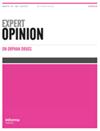Quality of life of patients with acromegaly: comparison of different therapeutic modalities
IF 0.8
4区 医学
Q4 PHARMACOLOGY & PHARMACY
引用次数: 0
Abstract
ABSTRACT Background Acromegaly is a rare disease that significantly affects patients’ quality of life (QoL) – especially appearance, pain, depression, energy and vitality. The aim is to assess and compare the acromegaly patients’ QoL related to the type of pharmacotherapy using specific and generic QoL measuring instruments. Research design and methods A cross-sectional questionnaire-based study among 163 hospitalized acromegaly patients was conducted. QoL was measured by Acromegaly Quality of Life Questionnaire (AcroQol), Short-Form Health Survey (SF-36) and EQ-5D-3 L. Results Women had lower AcroQol values than men 50 vs. 66 (p < 0.05). Lower values for octreotide than octreotide + pegvisomant were found with all questionnaires: 57 vs. 67 AcroQol (p = 0.0405), 0.699 vs. 0.7586 EQ-5D (p = 0.0595) and 57.94 vs. 66.06 SF-36 scores (p > 0.093) . A significant correlation between AcroQoL, SF-36 and EQ-5D-3 L scores (rs> 0, р < 0.00001) was revealed. AcroQol, EQ-5D and SF-36 are reliable questionnaires applicable for Bulgarian population with acromegaly. Conclusion This pilot study confirmed that combination therapy which includes biological therapy is related to higher physical appearance AcroQol scores than nonbiological monotherapy – a conclusion which should be further confirmed.肢端肥大症患者的生活质量:不同治疗方式的比较
摘要背景肢端肥大症是一种罕见的疾病,严重影响患者的生活质量,尤其是外观、疼痛、抑郁、精力和活力。目的是使用特定和通用的生活质量测量仪器评估和比较肢端肥大症患者与药物治疗类型相关的生活质量。研究设计和方法对163例住院肢端肥大症患者进行横断面问卷调查。通过肢端肥大症生活质量问卷(AcroQol)、简式健康问卷(SF-36)和EQ-5D-3L测量生活质量。结果女性的AcroQol值低于男性50对66(p<0.05)。所有问卷中奥曲肽的值均低于奥曲肽+pegvisomant:57对67(p=0.0405),0.699 vs.0.7586 EQ-5D(p=0.0595)和57.94 vs.66.06 SF-36评分(p>0.093)。AcroQoL、SF-36和EQ-5D-3L评分之间存在显著相关性(rs>0,р<0.00001)。AcroQol、EQ-5D和SF-36是适用于保加利亚肢端肥大症人群的可靠问卷。结论这项初步研究证实,包括生物治疗在内的联合治疗比非生物单一治疗与更高的身体外观AcroQol评分有关,这一结论有待进一步证实。
本文章由计算机程序翻译,如有差异,请以英文原文为准。
求助全文
约1分钟内获得全文
求助全文
来源期刊

Expert Opinion on Orphan Drugs
PHARMACOLOGY & PHARMACY-
CiteScore
2.30
自引率
0.00%
发文量
8
期刊介绍:
Expert Opinion on Orphan Drugs is an international, peer-reviewed journal that covers all aspects of R&D on rare diseases and orphan drugs.
 求助内容:
求助内容: 应助结果提醒方式:
应助结果提醒方式:


